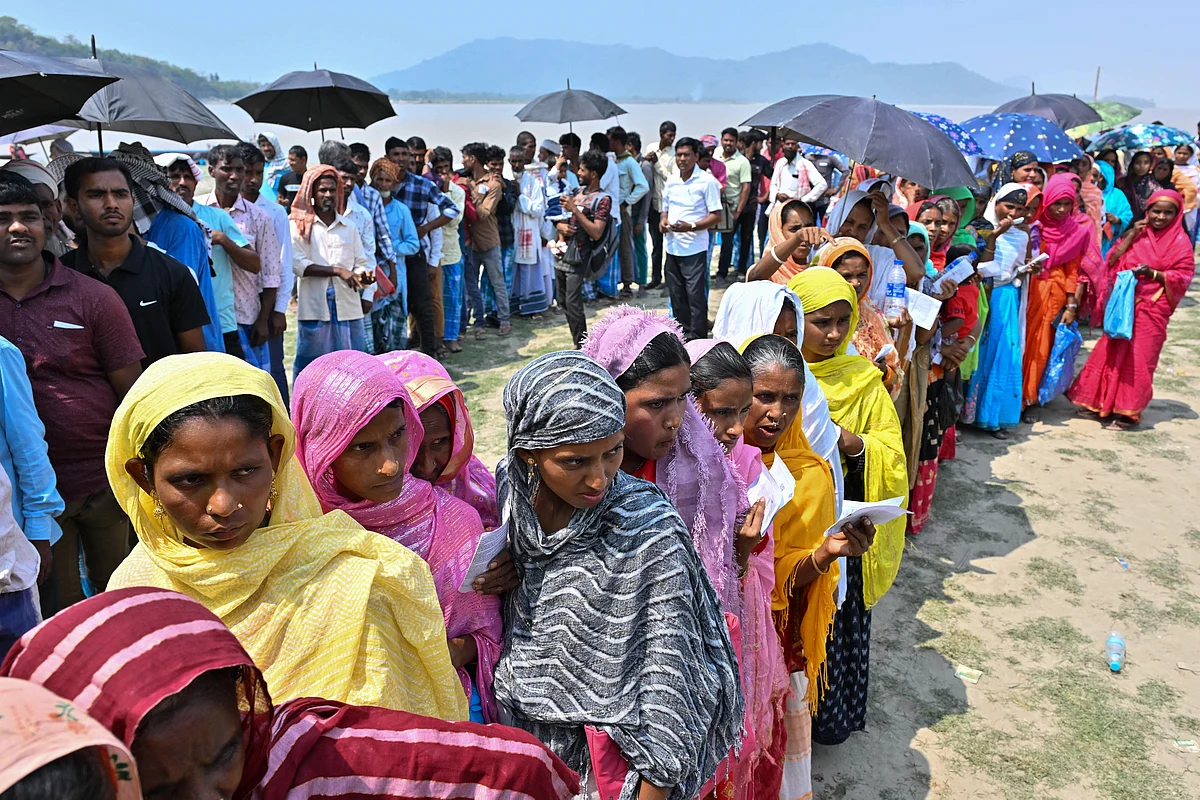
How India Ensures The Spirit Of Democracy Is Upheld At All Costs
In April 2019, an Election Commission official in Arunachal Pradesh trekked for two days through dense forests, crossed rivers by bamboo raft, and camped under open skies - all to reach a lone polling station serving a single voter. That image, both humbling and extraordinary, encapsulates the spirit of Indian democracy: no citizen is too remote, no voice too small.
India's general elections are often described as the largest democratic exercise on Earth. But the term hardly does justice to their scale. In the 2024 Lok Sabha elections, for instance, approximately 980 million people were eligible to vote - more than the combined populations of the European Union and the United States. Spread across a record one million-plus polling stations, guarded and staffed by over 15 million officials and staff, this nationwide election process is repeated every five years with almost clockwork precision.
Recommended For YouThe institution at the heart of this mammoth operation is the Election Commission of India (ECI), an autonomous constitutional body that has earned international respect for its independence and efficiency. Established in 1950, it operates with a mandate enshrined in the Constitution, immune from political interference, and guided by a clear code of conduct.
Its credibility rests on a relentless commitment to fairness: from monitoring campaign finance to enforcing the Model Code of Conduct that governs political behaviour, the ECI's authority is both legal and moral. Working ceaselessly without fear or favour, it has a culture of accountability that has made India's electoral process one of the most trusted in the world.
Not many people know that it was India that perfected and deployed mass electronic voting for the first time in the world way back in 1982. (For the record, Netherlands, the second country to employ EVMs, did so almost a decade later.)
]“EVMs are a matter of pride for India as they cannot lie, and I have no doubts about the credibility of the machines,” asserted TS Krishnamurthy, a former Chief Election Commissioner under whose tenure EVMs were used extensively.
Critics of technology in elections often point to vulnerabilities, but in India, the embrace of innovation has strengthened rather than weakened trust. Since 2004, the country has used Electronic Voting Machines (EVMs) nationwide, replacing the paper ballots that were prone to delays and manipulation.
To further ensure integrity, Voter Verifiable Paper Audit Trail (VVPAT) systems were introduced, allowing each voter to confirm their choice on a printed slip before it drops into a sealed box for possible cross-verification. Combined with biometric voter ID systems, GPS tracking of poll parties, and live webcasting from sensitive booths, these safeguards form a multilayered defence against fraud.
Observers from the Commonwealth to the United Nations have lauded India's ability to blend scale with security, even as they praised the election process for its transparency, peacefulness, inclusiveness, and accessibility.
Perhaps the most inspiring feature of India's elections is their inclusivity. The ECI ensures 100% accessibility, setting up polling stations in mountain hamlets, desert villages, and islands in the Sundarbans. Special provisions exist for voters with disabilities, senior citizens, and those in remote conflict zones.
For countries seeking to strengthen democratic institutions, the Indian example offers a simple yet profound lesson: integrity is not an accident; it is the product of vigilance, inclusivity, and a culture that places the voter - every voter - at the centre.
And so, when the next official trudges through a jungle for a single ballot, it will be the system itself, in action - the world's largest democracy, walking the last mile to keep its promise.
The author is a writer at Milaybami.

Legal Disclaimer:
MENAFN provides the
information “as is” without warranty of any kind. We do not accept
any responsibility or liability for the accuracy, content, images,
videos, licenses, completeness, legality, or reliability of the information
contained in this article. If you have any complaints or copyright
issues related to this article, kindly contact the provider above.
















Comments
No comment